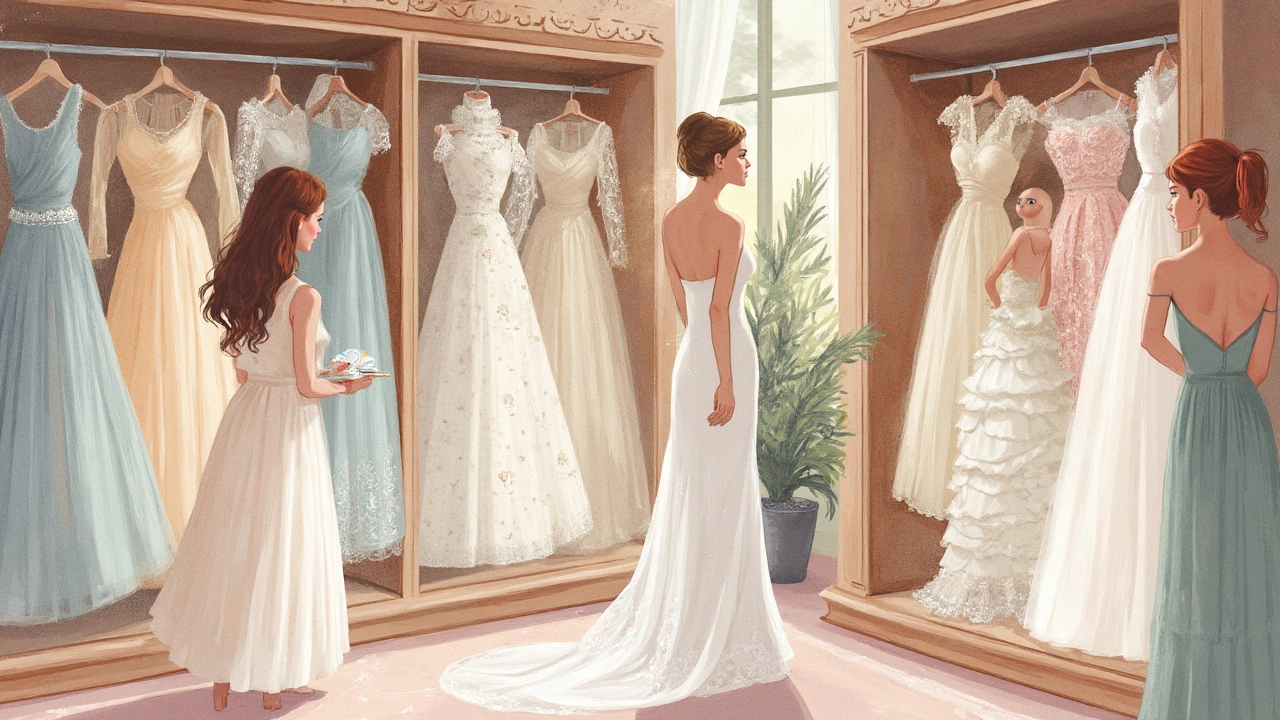Bridal Dress Cost: What You Really Need to Know
Seeing a gorgeous gown on a runway can make the price tag feel scary. The truth is, you can get a dress you love without blowing your entire budget. Let’s break down where the money goes, what factors push the cost up, and how you can keep the price where you want it.
What Influences the Price?
First up, material matters. Silk, satin, lace, and hand‑embroidered details all cost more than a simple polyester blend. A designer label also adds a premium, while off‑the‑rack options tend to be cheaper. The amount of custom work—like altering the neckline, adding beading, or making a special fit—adds labor costs too. Finally, where you buy the dress plays a role: boutique stores in city centres charge higher rent, which shows up in the price.
Typical Price Ranges
In the UK, most brides spend between £1,000 and £3,000 for a ready‑made gown. If you go for a designer dress with custom work, the price can jump to £5,000 or more. Rental services or sample sales often let you snag a high‑end dress for as little as £500. Keep in mind that you’ll also need to budget for alterations, which usually start at £150 and can rise to £500 for major changes.
Here’s a quick snapshot:
- Budget (off‑the‑rack): £800‑£1,500
- Mid‑range (designer off‑the‑rack): £1,500‑£3,000
- High‑end (custom or designer): £3,000‑£8,000+
- Rental/sample sale: £400‑£800
These numbers give you a ballpark, but your final cost will depend on the choices you make.
Tips to Keep Your Dress Budget In Check
1. Start early. Giving yourself 9‑12 months lets you shop sales and avoid rush fees for last‑minute alterations.
2. Set a clear budget. Decide how much you’re willing to spend before you try on dresses. Stick to it, even if a salesperson tries to upsell.
3. Consider off‑season buying. Bridal shows and outlet stores often discount dresses after the wedding season ends.
4. Rent or buy a sample. Many boutiques have a sample or rental program that lets you wear a designer dress for a fraction of the retail price.
5. Think about resale. Some brides sell their dress after the wedding. Buying a gently used gown can cut costs dramatically.
6. Limit extra embellishments. A simple silhouette can look stunning with the right accessories. Skip unnecessary beading if you’re watching the price.
7. Negotiate alterations. Some shops include a certain amount of alteration in the purchase price. Ask ahead of time so you’re not surprised later.
When to Pay for Your Dress
Most boutiques ask for a deposit (often 20‑30%) when you place an order, with the balance due at fitting. Rental services usually require full payment up front, but they’ll return a deposit after you return the dress in good condition.
Make sure any payment plan is written down. Know the cancellation policy—some places keep the deposit if you change your mind after a certain date.
Overall, the key to a happy dress purchase is knowing what you want, how much you can spend, and where you can save without compromising style. With these tips, you’ll be able to pick a gown that makes you feel beautiful and keeps the rest of your wedding budget on track.
Ready to start hunting for the perfect dress? Use the price guide above as your compass, and remember that the best dress is the one that fits you both in style and in budget.
How Much Should a Bride's Dress Cost? Real Insights for Every Budget
Figuring out how much to spend on a wedding dress can be tricky. With options ranging from thrift store finds to high-end designer gowns, brides need practical insights to make informed decisions. This article breaks down what factors into the cost, tips for every budget, and what to consider beyond the price tag. Whether you're a budget-savvy bride or ready to splurge, this guide helps navigate the ever-complex world of bridal dresses.
View More